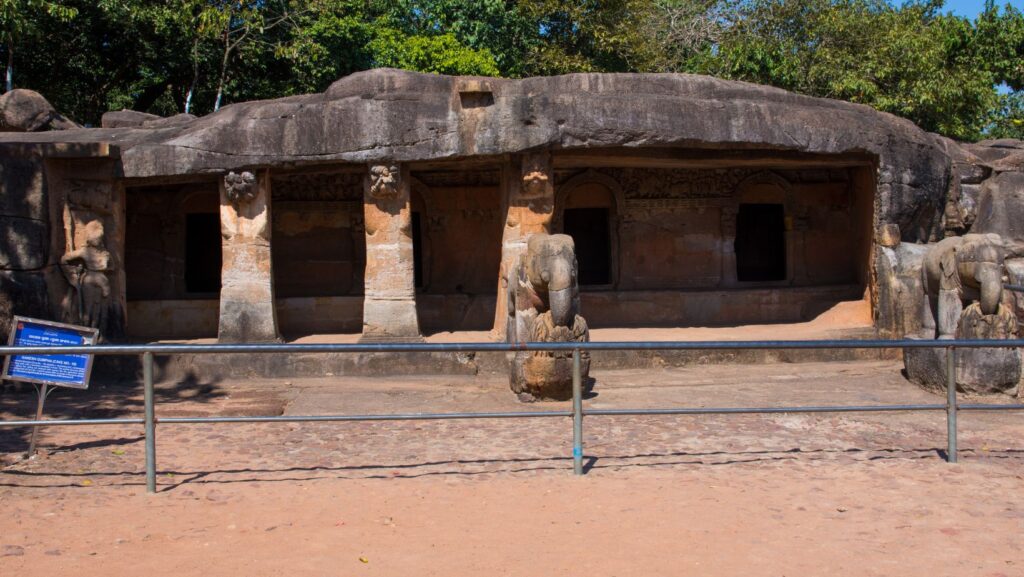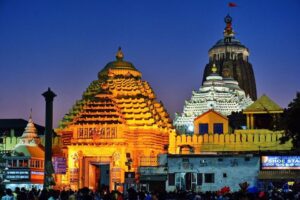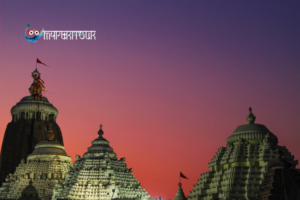The caves of Udayagiri and Khandagiri are located near the city of Bhubaneswar, the capital of Odisha, India. They are easily accessible by road, rail, and air, and are open to visitors from 6 am to 6 pm every day, except on Mondays. The entry fee for Udayagiri and Khandagiri Caves is Rs. 25 for Indian nationals and Rs. 300 for foreign nationals.

What are the Udayagiri and Khandagiri Caves?
Udayagiri and Khandagiri Caves, a remarkable site of historical, cultural, and artistic significance in the state of Odisha, India. These caves are not only a testimony to the rich and glorious past of Odisha, but also a treasure trove of Jain heritage, one of the oldest religions in the world. explore the fascinating caves of Udayagiri and Khandagiri, and discover their hidden secrets and stories.
The caves were created mainly during the reign of King Kharavela, who ruled Kalinga from the 1st century BCE to the 1st century CE. He was a patron of Jainism and a powerful conqueror who expanded his empire across India. He also commissioned many public works, such as irrigation projects, roads, and monuments. One of his most famous achievements was the excavation of the Udayagiri and Khandagiri Caves for the residence and worship of Jain monks
The caves are also known as Kattaka Caves or Cuttack Caves, as they were part of the ancient city of Kataka, which was the capital of Kalinga until the 10th century CE. The caves are mentioned as Kumari Parvata (Virgin Hill) in the Hathigumpha inscription, a long record of Kharavela’s deeds carved on the wall of one of the caves.
The caves are classified into two groups: Udayagiri has 18 caves and Khandagiri has 15 caves. The caves are numbered according to their location and sequence, and each cave has a name based on its features or legends. The caves are also called lena or leṇa in the inscriptions, which means a rock-cut shelter.
What can you see in the Udayagiri and Khandagiri Caves?
The Udayagiri and Khandagiri Caves are a treasure trove of history, culture, and art. You can see various sculptures, carvings, paintings, and inscriptions that depict the life and beliefs of the Jain community, as well as the political and social events of the Kalinga dynasty. Some of the highlights of the caves are:
• Hathi Gumpha (Elephant Cave): This is the largest and most famous cave in Udayagiri, where you can see the Hathigumpha inscription, which is written in Brahmi script and Prakrit language. The inscription narrates the achievements and conquests of King Kharavela and also mentions his interactions with other contemporary rulers, such as the Mauryan emperor Ashoka and the Indo-Greek king Demetrius. The inscription is considered as one of the most important sources of ancient Indian history.
• Rani Gumpha (Queen’s Cave): This is the largest and most ornate cave in Udayagiri, which has two stories and a spacious courtyard. The cave is decorated with elaborate carvings of animals, humans, and divine beings, depicting scenes from Jain mythology and folklore. The cave also has a series of cells for the monks to live in.
• Ananta Gumpha (Snake Cave): This is a small but beautiful cave in Udayagiri, which has a carved doorway with a hooded snake on the top. The cave also has sculptures of Jain Tirthankaras (spiritual teachers) and other figures, such as a dancing girl, a royal couple, and a lion.
• Ganesha Gumpha (Ganesha Cave): This is a cave in Udayagiri, which has a carved image of Ganesha, the elephant-headed god of wisdom and success, on the wall. The cave also has paintings of floral and geometric patterns on the ceiling.
• Jaya Vijaya Gumpha (Victory Cave): This is a cave in Udayagiri, which has a carved panel of a battle scene between the armies of Kharavela and a rival king. The panel shows the details of the weapons, armor, chariots, elephants, and horses used in the war.
• Mancapuri and Swargapuri (Jewel City and Heaven City): These are two adjacent caves in Khandagiri, which are connected by a stone bridge. The caves are named after the legendary cities of the Jain cosmology, where the souls of the righteous go after death. The caves have carvings of Jain Tirthankaras, celestial beings, and animals.
• Tatowa Gumpha (Parrot Cave): This is a cave in Khandagiri, which has a carved doorway with two parrots on the top. The cave also has sculptures of Jain Tirthankaras and a scene of a royal procession.
• Navamuni Gumpha (Nine Saints Cave): This is a cave in Khandagiri, which has a carved panel of nine Jain saints sitting in meditation. The panel also has inscriptions of their names and titles.
Why should you visit the Udayagiri and Khandagiri Caves?
The Udayagiri and Khandagiri Caves are not only a marvel of ancient engineering and artistry, but also a reflection of the rich and diverse culture of Odisha. The caves offer a glimpse into the history, religion, and society of the Kalinga dynasty, which was one of the most powerful and influential kingdoms in India. The caves also showcase the harmony and tolerance that existed between different faiths and communities, as the caves have elements of Jainism, Hinduism, and Buddhism.
The Udayagiri and Khandagiri Caves are a must-see for anyone who loves to explore and learn about the past and also appreciate the beauty and creativity of the human spirit. The caves are a hidden treasure of history, culture, and art that will surely leave you amazed and inspired.



